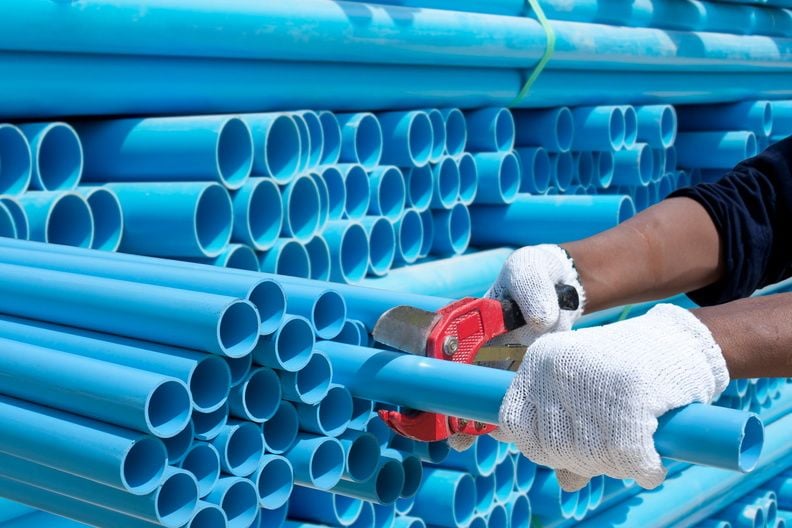Table of Contents
In a world where infrastructure maintenance is vital, pipe replacement takes centre stage. But here’s the kicker – it’s not just about swapping old pipes for new ones. The materials we use matter, and that’s where innovation strides in with a superhero cape.
You might not think about it often, but pipes play a crucial role in our lives. They deliver water to our homes, sweep away waste, and ensure things run smoothly. Yet, pipes aren’t invincible. Over time, they can wear down, corrode, and develop leaks. That’s when pipe replacement steps in, like giving your home’s plumbing system a fresh start.
Traditionally, pipes were made from materials like cast iron and PVC. They did the job, but they had their limitations. With technology advancing faster than a speeding bullet, we can embrace innovative materials that punch in durability, longevity, and sustainability.
Traditional Materials for Pipe Replacement
Cast iron and PVC pipes were the bread and butter of pipe line replacement for a long time. Sturdy as they are, they had their setbacks. Cast iron pipes could be a bit heavy, making installations cumbersome. PVC pipes, while lighter, weren’t always the best match for high-pressure environments or extreme temperatures.
What’s that you ask? Well, cast iron pipes could rust over time, leading to potential blockages and a need for frequent maintenance. PVC pipes, though resistant to corrosion, could become brittle with age. It was a Catch-22 – replace old pipes with similar materials, and the cycle would continue.
Introduction to Innovative Materials for Pipe Replacement
Picture this: Cutting-edge materials are coming to the rescue. These game-changers are completely revolutionizing pipe replacement. Not only do they retain the original essence, but they also introduce a new era of efficiency. They’re lighter, stronger, and designed to outlast their predecessors. And the best part? They bring along a host of benefits that make homeowners and plumbers alike.
Let’s talk about benefits. Imagine water lines resistant to corrosion and practically invincible against leaks, all while demonstrating remarkable adaptability to diverse environments. These materials are like the superheroes within the plumbing universe, poised to rescue us from the predicaments associated with conventional pipes.
Types of Innovative Materials for Pipe Replacement
Fiberglass-reinforced polymer (FRP) Pipes
FRP pipes are like the armour of the plumbing world. Their incredible strength arises from the fibreglass reinforcement, and they exhibit remarkable corrosion resistance. These versatile pipes adeptly manage tasks ranging from maintaining the water line to facilitating drain and sewer systems, establishing them as the preferred option for modern replacement projects.
High-Density Polyethylene (HDPE) Pipes
If the water supply’s durability and adaptability were likened to superheroes, they’d be HDPE pipes. These remarkable pipes can flex without breaking, with fewer joints and potential leak points. Plus, they are built to last, effectively withstanding deterioration caused by chemicals and various environmental factors. Speaking of water supply enhancements, the importance of main lead service line replacement cannot be overlooked.
Composite Pipes
Imagine a fusion of materials – that’s what composite pipes are all about. By combining different materials, we get pipes tailored to specific needs. Some are super strong, while others are ultra-resistant to chemicals. It’s like a choose-your-own-adventure for plumbers. Whether you are into ductless heating and cooling systems, orchestrating lead pipe replacement, introducing a new pipe, or navigating the intricacies of pipe relining composite pipes, offer a versatile expedition.
Challenges and Considerations
Not Without Challenges
Navigating through pipe problems requires a keen understanding of the situation. Dealing with water main or feet of pipe issues necessitates careful consideration of pipe repair options. Embracing innovative solutions for repipe or replacement services can bring about lasting resolutions. However, it’s crucial to acknowledge that these promising advancements might come with initial costs. Remember, this investment paves the way for a hassle-free plumbing future.
Implementing Innovation Wisely
Before fully embracing new materials, it’s crucial to weigh factors such as their compatibility with the existing systems and their adherence to construction codes. This process revolves around ensuring a seamless transition, devoid of any potential hiccups that could arise. Neglecting these considerations might result in complications when replacing plumbing components, such as water supply and sewer pipes.
Moreover, the overall cost-effectiveness and potential health risks should be evaluated. Ultimately, the goal is to modernize an old plumbing setup efficiently while maintaining accessibility for future maintenance needs.
Conclusion
In a world where technology propels us forward, why stick with the old when the new is so promising? Innovative materials are a leap toward more efficient, durable, and sustainable pipe replacement.
As we bid farewell, remember that embracing innovation isn’t just upgrading pipes. Like garage door installation and replacement, it’s about safeguarding our homes, communities, and the planet. So, the next time you think about pipe replacement, think beyond the basics and step into the realm of possibilities.





